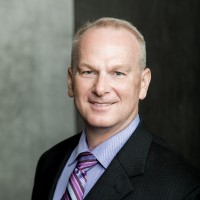As leaders, we know that focusing on goals and tending to expectations must happen much more frequently than every January. But transformative disruptions and diversions we have encountered in our workplace, workforce and in our culture have caused many leaders to grow weary as their firms suffer from organizational entropy leading to underperformance. Most change is here to stay. So, what now?
INTENTIONAL STRATEGY AND INTENTIONAL POSITIVE PRESENCE
You have heard that doing the same things will produce the same results and that what made us successful will keep us successful. These principles are only true in an environment of incremental change. But we are in an environment of transformative change. In this brave new world, relying on the approach of the past without an intentional growth mindset strategy is likely to lead the firm to its eventual demise.
More than ever, leaders need to formulate and articulate their own internal operational strategy to tackle 2024 and beyond. Most firms will continue to experience persistent skills shortages and risk losing over-tasked top performers, productivity losses exasperated by operational inefficiency, and significant cost pressures while struggling to adopt revolutionary technology to facilitate their ambition to deliver and execute high-quality client service and work product.
An essential step for leaders is to employ a growth mindset approach to analyzing the firm’s operations. Consider how your firm should evolve or transform its internal and external deliverables. Is it time to modify or eliminate internal processes? Take a new approach to job design? Initiate a different level of activity with client relationships? Define or reiterate an intentional workplace culture? The old rules were valuable for an old world, and they tend to keep us in a fixed mindset. New rules are required for some things in this new world. A growth mindset allows us to explore them.
ALIGNMENT: THE RIGHT MOTIVATION
Many people use January 1 as a marker to go to the gym and eat right to lose weight. Such resolutions do not work for everyone, and they typically give way to old habits that are more powerful than the motivation to change. The problem persists for many people because motivation does not match one’s values. Their energy and resources are not expended on the right things. Eventually, the energy required to overcome the chore will not be available. A method of expending calories that is matched to such a person’s ability to enjoy the activity will produce better and more lasting results.
“Certainly, being positively present includes taking the time to know the firm community. In the brave new world, this is harder than ever — yet perhaps more important than ever.”
The same logic can be applied at our firms. Rather than addressing everything that needs to be improved in the firm, figuring out what other firms are doing or simply copying what you did last year, determine how your firm’s values inform where to focus resources and energy. In other words, match your activity with the right motivation in your own context.
PRESENCE: A CULTURE OF CONNECTION
Alignment is not enough to meet the challenges of the brave new world. Leaders need to foster connectedness in the workplace with positive presence that reaches far beyond physical presence. Positive presence means both having intentional presence or impact in the firm and creating an environment that empowers others to be positively present or have impact in positive ways, while actively and significantly reducing toxicity.
Positive presence fuels growth. For example, criticism can be used in a positive manner as a tool for improvement or it can be a destructive force that erodes resilience and generates toxicity. The approach toward social and workplace engagement can make all the difference. Advocating an environment of dignity and respect and holding people accountable for their effect on the workplace environment is the responsibility of the leaders of the firm. Leaders who demonstrate positive presence can make gains in workforce productivity and well-being. Those who empower others to demonstrate positive presence and hold others accountable transform their firm culture to one of belonging.
Certainly, being positively present includes taking the time to know the firm community. In the brave new world, this is harder than ever — yet perhaps more important than ever. For leaders, the challenge includes finding ways to be more efficient, be better organized and communicate more often with the motivation to be able to spend more time being positively present and fostering the same throughout the organization.
BOTH ARE NECESSARY
In the brave new world, an operational strategy without positive presence will likely become ineffective over time as the workforce becomes disengaged. Positive presence without an operational strategy will exasperate high performers with inefficient processes and outdated job design and will likely cause them to seek other opportunities.
Change is here. Transformative disruption will continue to challenge the status quo. The good news is that now is a great time to have a brave new start for a brave new world.


